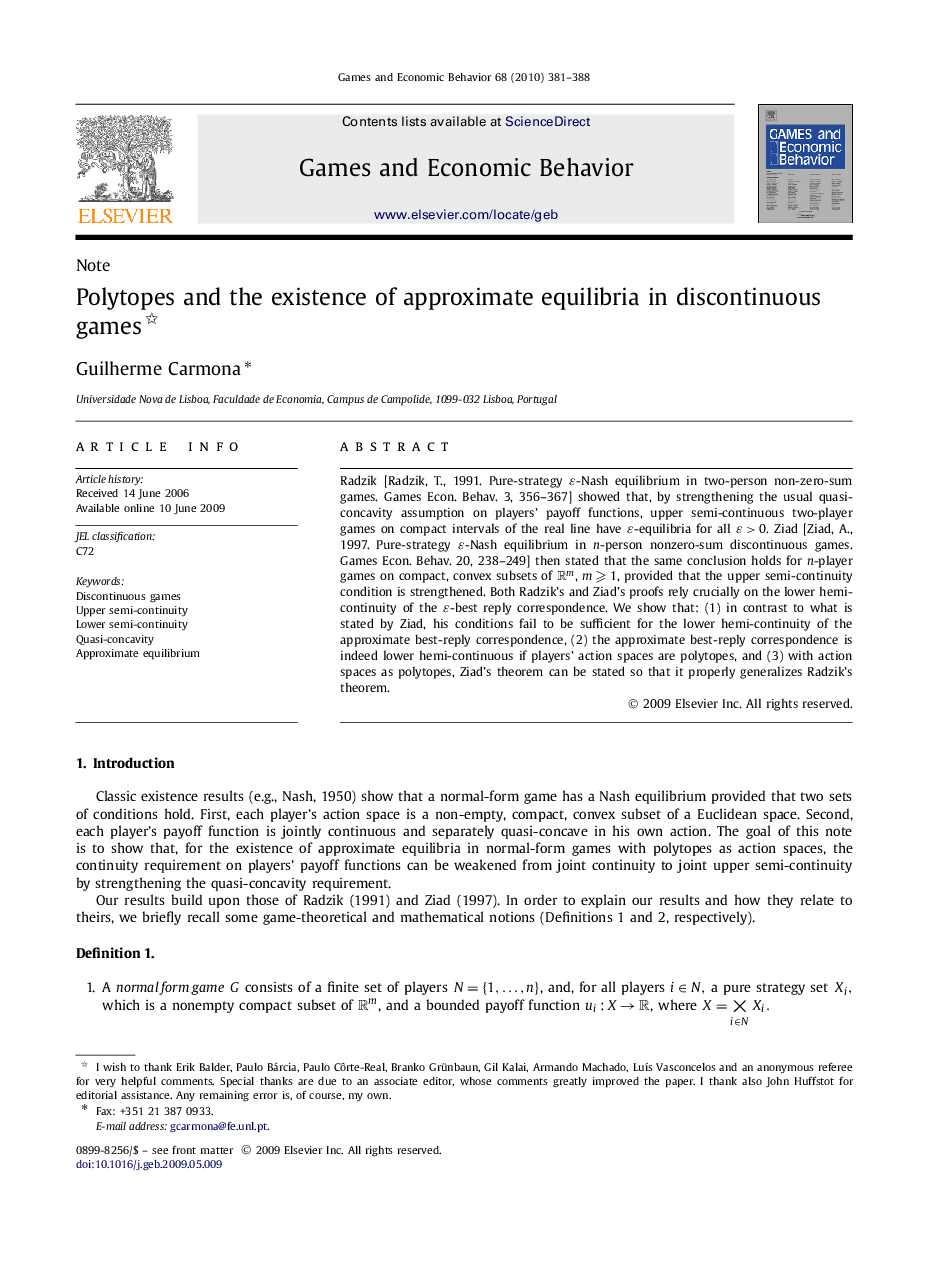| Article ID | Journal | Published Year | Pages | File Type |
|---|---|---|---|---|
| 5072463 | Games and Economic Behavior | 2010 | 8 Pages |
Abstract
Radzik [Radzik, T., 1991. Pure-strategy ε-Nash equilibrium in two-person non-zero-sum games. Games Econ. Behav. 3, 356-367] showed that, by strengthening the usual quasi-concavity assumption on players' payoff functions, upper semi-continuous two-player games on compact intervals of the real line have ε-equilibria for all ε>0. Ziad [Ziad, A., 1997. Pure-strategy ε-Nash equilibrium in n-person nonzero-sum discontinuous games. Games Econ. Behav. 20, 238-249] then stated that the same conclusion holds for n-player games on compact, convex subsets of Rm, m⩾1, provided that the upper semi-continuity condition is strengthened. Both Radzik's and Ziad's proofs rely crucially on the lower hemi-continuity of the ε-best reply correspondence. We show that: (1) in contrast to what is stated by Ziad, his conditions fail to be sufficient for the lower hemi-continuity of the approximate best-reply correspondence, (2) the approximate best-reply correspondence is indeed lower hemi-continuous if players' action spaces are polytopes, and (3) with action spaces as polytopes, Ziad's theorem can be stated so that it properly generalizes Radzik's theorem.
Keywords
Related Topics
Social Sciences and Humanities
Economics, Econometrics and Finance
Economics and Econometrics
Authors
Guilherme Carmona,
